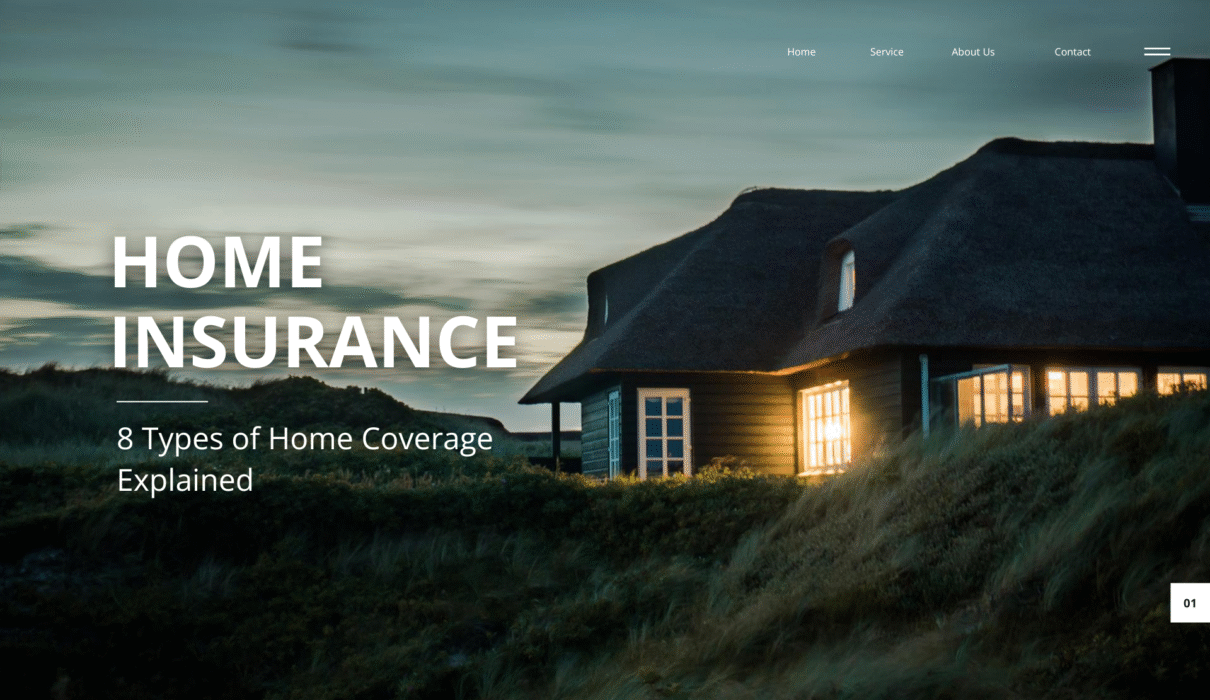Home insurance is designed to protect your property and belongings from unexpected events like accidents, natural disasters, or theft. It provides financial coverage in times of loss, offering peace of mind. There are various types of home insurance coverage, each tailored to different needs. Here’s a breakdown of eight common types of home insurance coverage every homeowner should understand:
1. Dwelling Coverage (Coverage A)
Dwelling coverage is the most essential component of a home insurance policy. It protects the physical structure of your home, including walls, roof, floors, and built-in appliances, against damages from events like fire, storms, vandalism, or accidents. This coverage ensures that the cost of repairing or rebuilding your home after a disaster is covered.
2. Other Structures Coverage (Coverage B)
This type of coverage protects structures on your property that aren’t attached to your home, such as a garage, shed, fence, or guesthouse. If these structures are damaged or destroyed due to a covered event, your insurance policy will cover the repair or replacement costs.
3. Personal Property Coverage (Coverage C)
Personal property coverage protects your belongings, such as furniture, electronics, clothing, and valuables, in case of damage or loss due to fire, theft, or other covered events. It generally covers both damage to items within your home and belongings lost or stolen outside your home (e.g., items stolen from your car).
Tip: Take an inventory of your possessions, including photos and receipts, to ensure you have sufficient coverage for your personal property.
4. Loss of Use (Additional Living Expenses Coverage) (Coverage D)
Loss of use coverage helps cover additional living expenses if your home becomes uninhabitable due to a covered event (such as fire or flood). This may include the cost of temporary housing, meals, and other necessary expenses while your home is being repaired or rebuilt.
5. Liability Coverage (Coverage E)
Liability coverage protects you if someone is injured on your property or if you accidentally cause damage to someone else’s property. For example, if a guest slips and falls on your property, liability coverage helps cover medical bills, legal fees, and other related costs. This coverage is crucial to protect yourself from financial loss due to accidents that occur on your property.
6. Medical Payments Coverage (Coverage F)
This coverage pays for medical bills if someone is injured on your property, regardless of who is at fault. Unlike liability coverage, which covers legal costs, medical payments coverage directly covers medical expenses up to a set limit. It also extends to injuries sustained by household members or visitors.
7. Flood Insurance
Home insurance policies generally do not cover flood damage. To protect your home from flooding, you will need to purchase separate flood insurance. This policy covers damage to your home and belongings caused by flooding, including from heavy rains, rising rivers, or storm surges. It’s essential for homeowners in flood-prone areas.
8. Earthquake Insurance
Like flood insurance, earthquake insurance is typically not included in a standard home insurance policy. If you live in an area prone to earthquakes, purchasing separate earthquake insurance can provide protection against damages to your home caused by seismic activity. This coverage typically includes the cost of rebuilding your home, repairing structures, and replacing personal property damaged in the earthquake.
Conclusion
Understanding the different types of home insurance coverage is essential to ensure your property, belongings, and financial well-being are adequately protected. By selecting the right types of coverage based on your needs and the risks associated with your location, you can safeguard yourself against unexpected financial loss. Always review your policy to ensure that it offers sufficient protection for all aspects of your home, including the dwelling, personal property, and liability concerns.

